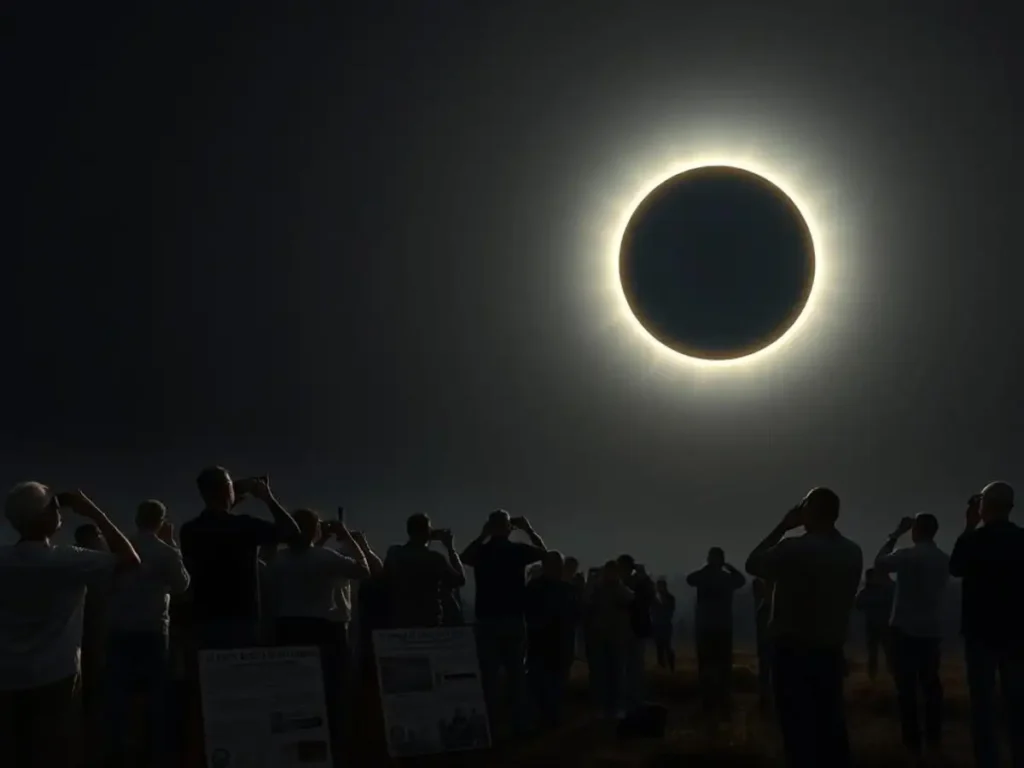
Solar Eclipse 2025 and 2027
Solar eclipses are one of nature’s most awe-inspiring events, where the Moon passes between the Earth and the Sun, casting a shadow that can plunge parts of the world into temporary darkness. If you’re wondering about a solar eclipse happening today, August 2, 2025, or curious about upcoming eclipses, this blog post will clear up any confusion and provide all the details you need.
Is There a Solar Eclipse on August 2, 2025?
Let’s address the big question first: There is no solar eclipse happening today, August 2, 2025, anywhere in the world. If you’ve heard rumors or seen posts online about a solar eclipse causing darkness today, those claims are incorrect. According to NASA and trusted astronomical sources like timeanddate.com, no solar eclipse is scheduled for this date. The confusion may stem from excitement about a major total solar eclipse set to occur on August 2, 2027, which we’ll cover later in this post.
If you’re eager to experience a solar eclipse soon, don’t worry! There’s an upcoming eclipse in 2025, and we’ll walk you through the details so you can plan ahead.
The Next Solar Eclipse: September 21, 2025
While there’s no eclipse today, the next solar eclipse is just around the corner. On September 21, 2025, a partial solar eclipse will be visible in specific parts of the world. Here’s what you need to know:
What Is a Partial Solar Eclipse?
A partial solar eclipse happens when the Moon covers only a portion of the Sun, creating a crescent-shaped Sun in the sky. Unlike a total solar eclipse, the Sun is never fully blocked, so it doesn’t cause complete darkness. However, it’s still a fascinating event to witness with proper safety precautions.
Where Will the September 2025 Eclipse Be Visible?
This partial solar eclipse will be visible in the following regions:
- Parts of the Pacific Ocean
- Southern Australia
- Antarctica
- Parts of southern Asia
Unfortunately, this eclipse won’t be visible in North America, most of South America, or Europe. If you’re in one of the visible regions, you’ll need to check local timings to catch it.
What Time Will the Eclipse Occur?
The exact timing of the September 21, 2025, partial solar eclipse depends on your location. Generally, it will take place during the afternoon hours in the regions where it’s visible. For example:
- In southern Australia, the eclipse may start around 2:00–3:00 PM local time, with maximum coverage around 4:00 PM.
- In parts of southern Asia, expect it in the late afternoon, around 3:00–5:00 PM.
How to Safely View the Eclipse
Never look directly at the Sun during a partial solar eclipse, as it can cause serious eye damage. Here are some safe viewing tips:
- Use solar eclipse glasses certified to meet the ISO 12312-2 standard.
- Try solar filters for telescopes or binoculars.
- Create a pinhole projector using cardboard for an indirect view of the eclipse.
- Watch live streams from observatories if you’re not in the eclipse’s path.
The Big Event: Total Solar Eclipse on August 2, 2027
If you’re disappointed about missing an eclipse today, mark your calendar for August 2, 2027. This date will bring a total solar eclipse, one of the most spectacular astronomical events you can witness. Here’s everything you need to know to start planning.
What Makes a Total Solar Eclipse Special?
During a total solar eclipse, the Moon fully blocks the Sun for a brief period, known as totality. This creates a surreal experience where:
- The sky darkens dramatically, like twilight in the middle of the day.
- You can see the Sun’s corona, a glowing halo of plasma, with the naked eye (during totality only).
- Stars and planets may become visible in the daytime sky.
- Animals and birds often react to the sudden darkness, adding to the eerie atmosphere.
Totality lasts only a few minutes, but it’s an unforgettable moment for those lucky enough to witness it.
Where Will the 2027 Eclipse Be Visible?
The total solar eclipse on August 2, 2027, will cross parts of:
- Southern Europe (e.g., Spain, Gibraltar)
- North Africa (e.g., Morocco, Algeria, Tunisia, Libya, Egypt)
- Middle East (e.g., Saudi Arabia, Yemen)
The path of totality—the narrow strip where the Sun is fully obscured—will be about 200–250 kilometers wide. Outside this path, viewers will see a partial eclipse.
Some prime viewing locations include:
- Southern Spain: Cities like Cádiz and Málaga will experience totality around 1:30–2:00 PM CEST, lasting up to 6 minutes and 23 seconds in some areas.
- Cairo, Egypt: Totality will occur around 2:00–3:00 PM local time, with about 5–6 minutes of darkness.
- Mecca, Saudi Arabia: Expect totality in the early afternoon, around 1:00–2:00 PM local time.
Planning Your Eclipse Trip
If you’re thinking about traveling to see the 2027 eclipse, here are some tips:
- Book early: Hotels and flights in the path of totality fill up quickly, sometimes years in advance.
- Choose a clear-weather location: Southern Spain and North Africa typically have sunny August weather, increasing your chances of a clear view.
- Join a guided tour: Many astronomy groups offer eclipse tours with expert guides and prime viewing spots.
- Bring proper gear: Pack solar eclipse glasses, a camera with a solar filter, and a tripod for photography.
Why the Confusion About August 2, 2025?
The mix-up about a solar eclipse today likely comes from excitement about the 2027 eclipse, which shares the same date two years later. Social media posts or outdated articles might have spread misinformation, so always verify eclipse dates with reliable sources like:
- NASA’s Eclipse Website (eclipse.gsfc.nasa.gov)
- The American Astronomical Society (aas.org)
These sites provide accurate schedules and visibility maps for all upcoming eclipses.
Other Eclipses to Look Forward To
If you can’t wait until 2027, here are a few more eclipses to keep on your radar:
- March 29, 2026: A partial solar eclipse visible in Europe, Asia, Australia, and parts of Africa.
- August 12, 2026: A total solar eclipse crossing parts of Greenland, Iceland, and northern Spain.
- July 22, 2028: A total solar eclipse visible in Australia and New Zealand.
Each of these events offers unique opportunities to experience the wonder of a solar eclipse, depending on where you are or where you’re willing to travel.
Fun Facts About Solar Eclipses
To wrap up, here are some fascinating tidbits about solar eclipses:
- Solar eclipses only happen during a New Moon when the Moon’s orbit aligns perfectly with the Sun and Earth.
- The longest a total solar eclipse can last is about 7.5 minutes, though most are shorter.
- Ancient cultures often saw eclipses as omens, with myths ranging from dragons eating the Sun to gods signaling change.
- The next total solar eclipse visible in the contiguous United States will be on August 23, 2044.
While there’s no solar eclipse today, August 2, 2025, you’ve got plenty to look forward to with the partial eclipse on September 21, 2025, and the incredible total solar eclipse on August 2, 2027. Whether you’re planning to watch from home or travel to the path of totality, these events are worth preparing for. Always use trusted sources to confirm dates and times, and prioritize safety when viewing the Sun.
Have questions about eclipses or want tips for planning your eclipse adventure? Let us know in the comments, and we’ll help you get ready for the cosmic show!







